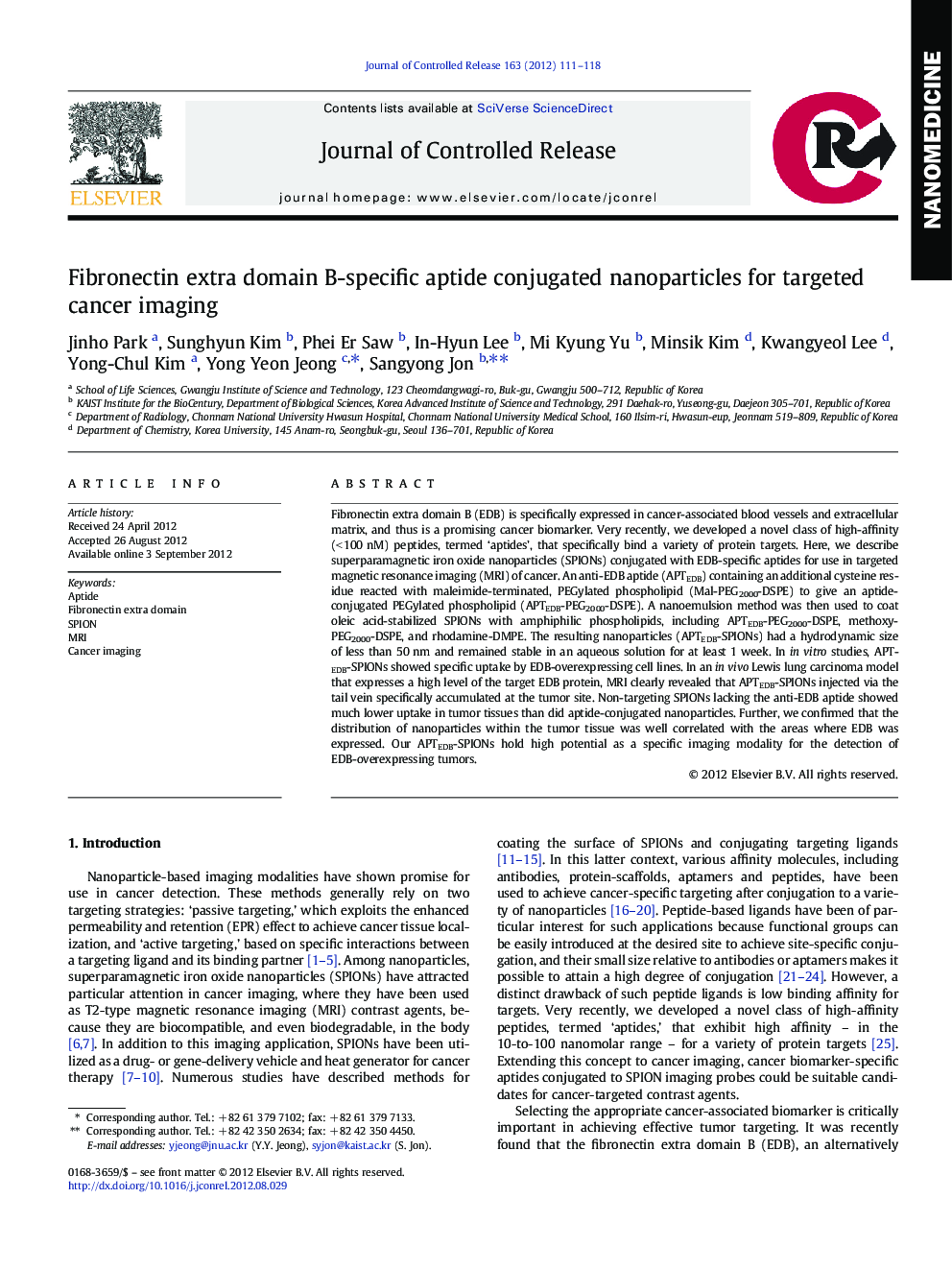| کد مقاله | کد نشریه | سال انتشار | مقاله انگلیسی | نسخه تمام متن |
|---|---|---|---|---|
| 1424381 | 986720 | 2012 | 8 صفحه PDF | دانلود رایگان |

Fibronectin extra domain B (EDB) is specifically expressed in cancer-associated blood vessels and extracellular matrix, and thus is a promising cancer biomarker. Very recently, we developed a novel class of high-affinity (< 100 nM) peptides, termed ‘aptides’, that specifically bind a variety of protein targets. Here, we describe superparamagnetic iron oxide nanoparticles (SPIONs) conjugated with EDB-specific aptides for use in targeted magnetic resonance imaging (MRI) of cancer. An anti-EDB aptide (APTEDB) containing an additional cysteine residue reacted with maleimide-terminated, PEGylated phospholipid (Mal-PEG2000-DSPE) to give an aptide-conjugated PEGylated phospholipid (APTEDB-PEG2000-DSPE). A nanoemulsion method was then used to coat oleic acid-stabilized SPIONs with amphiphilic phospholipids, including APTEDB-PEG2000-DSPE, methoxy-PEG2000-DSPE, and rhodamine-DMPE. The resulting nanoparticles (APTEDB-SPIONs) had a hydrodynamic size of less than 50 nm and remained stable in an aqueous solution for at least 1 week. In in vitro studies, APTEDB-SPIONs showed specific uptake by EDB-overexpressing cell lines. In an in vivo Lewis lung carcinoma model that expresses a high level of the target EDB protein, MRI clearly revealed that APTEDB-SPIONs injected via the tail vein specifically accumulated at the tumor site. Non-targeting SPIONs lacking the anti-EDB aptide showed much lower uptake in tumor tissues than did aptide-conjugated nanoparticles. Further, we confirmed that the distribution of nanoparticles within the tumor tissue was well correlated with the areas where EDB was expressed. Our APTEDB-SPIONs hold high potential as a specific imaging modality for the detection of EDB-overexpressing tumors.
Figure optionsDownload high-quality image (99 K)Download as PowerPoint slide
Journal: Journal of Controlled Release - Volume 163, Issue 2, 28 October 2012, Pages 111–118